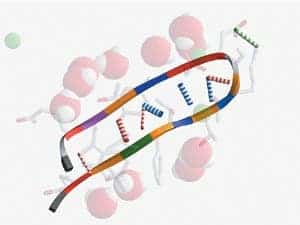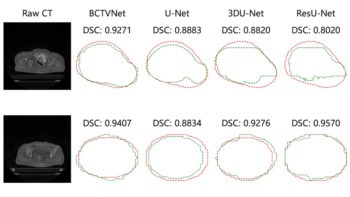Designed to simulate how proteins fold, IBM's powerful Blue Gene computer could transform medical science. Robert P Crease examines the risks and rewards of this ambitious project

In 1999 IBM embarked on an ambitious $100m project to build, by 2005, a supercomputer to simulate the folding of proteins. The computer is known as Blue Gene – after IBM’s nickname Big Blue, which originated in the 1960s thanks to the blue covers on its mainframe machines and other products.
The initial press release called the project a “grand challenge”, which the company defines as “a problem that by virtue of its degree of difficulty and the importance of its solution, both from a technical and societal point of view, becomes a focus of interest to a specific scientific community”. At first glance, the goal might seem arbitrary – a public-relations gimmick to tether a computer-engineering project to a quest of the life sciences. In fact, it was shrewdly chosen, and reflects dramatically changing forces in large scientific-industrial projects.
Grand challenges…
The discovery of the structure of DNA in 1953 – perhaps the single most important scientific event in the second half of the 20th century – made many scientists confident that they at last understood the “secret of life”. It also led to high hopes of imminent breakthroughs across medicine. DNA, after all, provides the structural blueprint for how to make the tens of thousands of proteins that are the body’s building blocks and carry out its basic cellular processes.
But in the intervening years, the breakthroughs failed to keep pace with expectations. A major hurdle was the failure to understand the process by which the strings of amino acids that comprise proteins fold into their final, complex, functional shapes. Protein folding remains the mysterious bridge between structure and function. Many deadly diseases, including cystic fibrosis, sickle-cell anaemia and “mad-cow” disease, are thought to arise from misfolding.
The ability to simulate protein folding could transform medical science and technology. Just as physics gained from Monte Carlo simulations, so biological experimentation could become more reliant on computing. IBM was also betting that the ability to simulate folding would transform computer technology. While computers are already improving at a torrid rate, building a version 500 times more powerful than existing models – as Blue Gene will need to be – requires extensive improvements in hardware, software and computer architecture. The project will also generate new kinds of large-scale, interdisciplinary collaborations among biologists and other kinds of scientists, especially computer engineers.
Finally, as IBM was keenly aware when it debated the project, success with Blue Gene would transform the computing industry. The ability to simulate protein folding would make supercomputers of Blue Gene’s capabilities indispensable for cutting-edge research in the life sciences, meteorology and other fields besides.
…and grand risks
A true challenge also involves risk. The history of computing – and of science – is full of ambitious, multi-year projects with worthy goals that were later abandoned, hopelessly compromised, or – worst of all – turned into white elephants that soak up money and resources, thanks to interim changes in science and technology. Examples include the Argonne National Laboratory’s zero-gradient synchrotron, which was completed – years late – in 1963, as well as the Brookhaven National Laboratory’s colliding-beam accelerator ISABELLE (cancelled in 1983) and the US Superconducting Super Collider (cancelled in 1993).
A country or even a national lab can absorb such failures. But to a private corporation, a grand challenge is something else again. IBM, however, has become adept at such challenges. Its last such venture was Deep Blue, the computer that defeated world chess champion Gary Kasparov in 1997. IBM planned this project with more in mind than grandmaster-level chess. Such a computer would be invaluable to scientists, researchers and engineers in artificial-intelligence research, and in the growing numbers of fields where it is critical to evaluate huge amounts of multiple variables.
Still, even among grand challenges, Blue Gene seems different. What IBM is doing is like throwing yourself into a dangerously hostile environment to ensure that you learn survival skills. To make matters easier, the project is based as much as possible on existing technologies. IBM is also seeking other possible uses for the computer – such as climate research, financial data analysis, weapons research and earthquake prediction – and recruiting potential users in those fields and incorporating them in the project.
The first of Blue Gene’s specially designed chips have just started to roll in from its factories. A key landmark will take place this autumn when IBM tests a “half-rack” – a big enough assembly of the chips to allow researchers to see if the overall design is going to work.
The critical point
In their recent book Analog Days: The Invention and Impact of the Moog Synthesizer, sociologists of science Trevor Pinch and Frank Trocco contrast the approach of Robert Moog with that of Don Buchla in developing electronic instrumentation in the 1960s. The authors want to understand why Moog’s synthesizer became an indispensable musical instrument while Buchla’s more innovative and ambitious device did not.
The reason, Pinch and Trocco conclude, had to do with the way Moog interacted with musical culture. Moog retained the traditional keyboard, for instance, meaning that musicians did not have to invent techniques from scratch. It was easy therefore to apply existing musical expertise and develop it in innovative ways. Moog “let the culture help shape his instrument” conclude the authors. “He listened to his users.” Allowing himself to be guided by culture, Moog strongly influenced it in turn.
The story of Blue Gene may well come to illustrate a similar lesson for contemporary science. It attempts to select a goal that is sufficiently ambitious to reward investing precious resources over the time needed to reach it, but sufficiently practical to incorporate, extend and co-ordinate existing techniques. Meanwhile, project leaders are continuing to cultivate users and incorporate their needs into the project as it evolves. How the Blue Gene project unfolds is likely to show much about how ambitious science will have to be practised in the 21st century.



